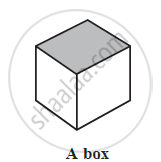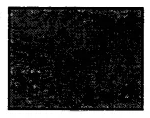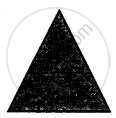Advertisements
Advertisements
Question
The following figure, given below, shows shadows of some 3D object when seen under the lamp of an overhead projector:

Solution

APPEARS IN
RELATED QUESTIONS
Can a polyhedron have for its faces 4 triangles?
The given Figure are prisms or not?

Is it possible to have a polyhedron with any given number of faces?
Verify Euler's formula for the following polyhedron:

Verify Euler's formula for the following polyhedron:

If a polyhedron has 10 faces and 8 vertices, find the number of edges in it.
Dice are cubes where the sum of the numbers on the opposite faces is 7. Find the missing numbers a, b and c.

The figure, given below, shows shadows of some 3D object when seen under the lamp of an overhead projector:

A rectangle
In this case, name the object.
The figure, given below, shows shadows of some 3D object when seen under the lamp of an overhead projector:

A triangle
In this case, name the object.
Dice are cubes with dots or dots on the face. Opposite faces of a die always have a total of seven on them.
In the given below net to make dice (cube), the numbers inserted in the square indicate the number of dots in it.

Insert suitable numbers in the blank so that numbers in opposite faces of the die have a total of seven dots.
Verify Euler’s formula for the table given below.
| Faces | Vertices | Edges |
| 32 | 60 | 90 |
Using Euler’s formula, find the unknowns.
| Faces | Vertices | Edges |
| ? | 6 | 14 |
In the figure,  the number of faces meeting at B is ______.
the number of faces meeting at B is ______.
How many faces does the following solid have?
Hexahedron
How many vertices does the following solid have?
Cylinder
How many vertices does the following solid have?
Sphere
How many vertices does the following solid have?
Tetrahedron
How many edges does the following solid have?
Hexagonal Prism
How many edges does the following solid have?
Kaleidoscope
A cylinder has no vertex.
